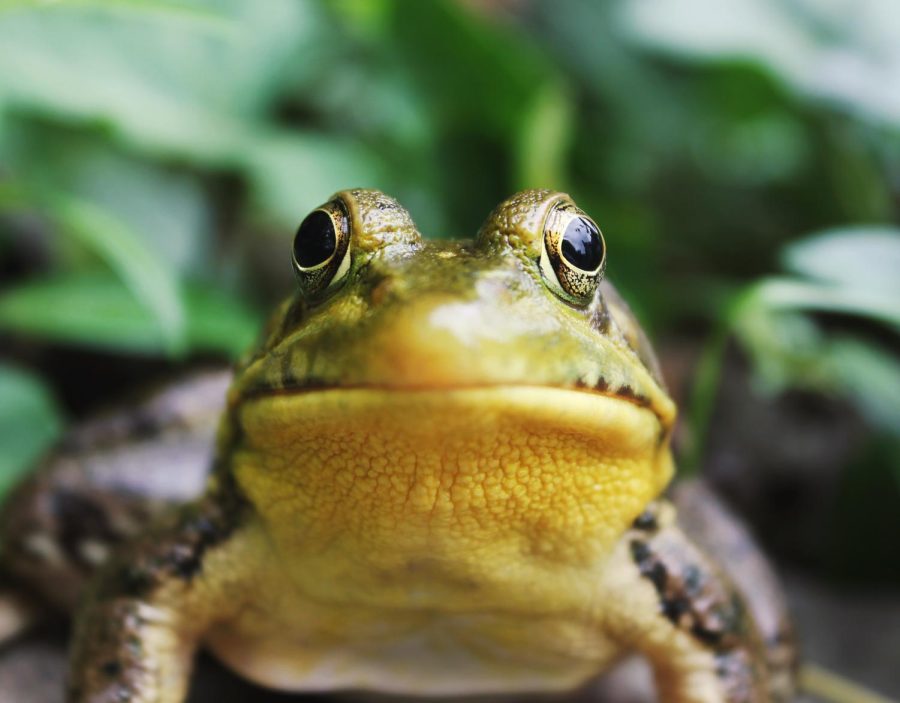Hopping Through Life: Frogs
March 24, 2022
A frog is a small slimy character. They have short, stubby bodies and big, bulging eyes. Frogs have no scales, feathers, nor tails. Frogs are cold blooded amphibians.
Frogs go through a tough childhood. Frog mothers abandon their babies as young “eggs.” Large groups of eggs clump together to form “egg masses.” Only 0.8% of frog eggs survive through this stage of life! Once these frogs hatch they turn into something called a “tadpole” they begin to grow tails and small legs. Once frogs grow their full legs frogs lose their tail. Then they are full frogs. Frogs only live for about 3-6 years, and they spend most of this time sleeping.
Frogs are “amphibians.” Amphibians live in water or on land cold blooded vertebrates. A vertebrate is an animal with a backbone. A “invertebrate” is an animal that has no backbone. Types of amphibians include frogs, salamanders ,newts, caecilians, axolotls, and more.
Frogs are very helpful when it comes to getting rid of pests. They will put anything living that will fit into their mouths like bugs, larvae, slugs, worms, spiders, and sometimes small fish! Their slimy sticky tongues help with sweeping up these tiny critters. One swift move can pull a frog’s prey right into its mouth. “Frogs use their eyeballs to swallow. Frogs eat their prey whole and their eyeballs actually sink down into their mouth and push the food down into their throat,” says the Burke Museum.
Many frogs are dangerous not to us but to many other animals. All frogs have poison glands in their skin but “poison frogs” are extremely toxic cold blooded. A website called World and Trust states that “Toxin equivalent to two grains of salt is enough to kill one person!” There are many types of poison frogs, such as. golden poison frogs, strawberry poison-dart frogs, green and black poison dart frogs, oophaga, hyloxalus, and more.
As long as people keep a healthy distance away from those poisonous frogs, they can learn to appreciate the beauty and contributions of these hopping amphibians.





